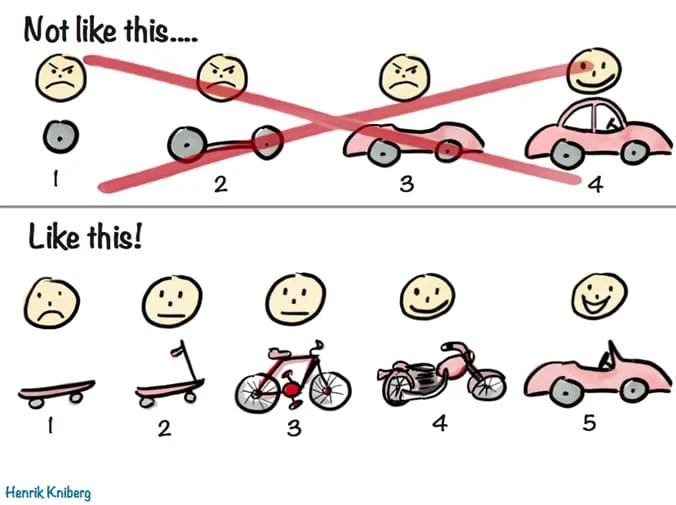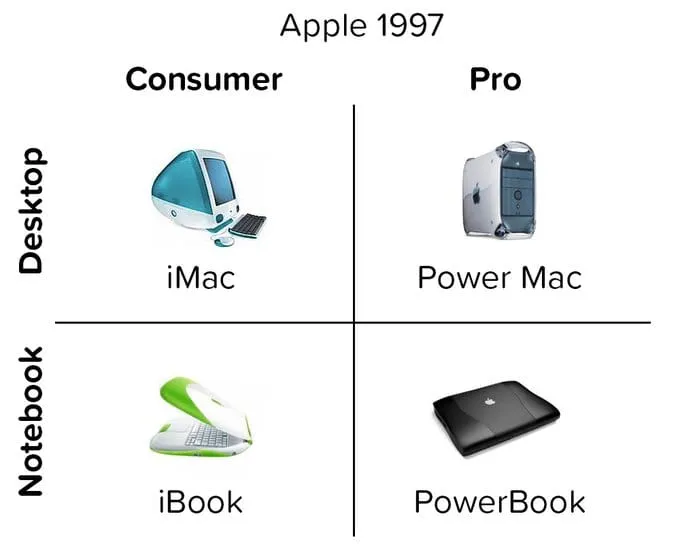
🐴 Steve Jobs cut 70% of products. It saved Apple.
🐴 Steve Jobs cut 70% of products. It saved Apple.
🐴 Steve Jobs cut 70% of products. It saved Apple.
IN THIS EDITION:
🍎 Ship the skateboard, not the perfect car
🍎 How Steve Jobs saved Apple by cutting 70% of products
🍎 The school that’s betting big on young entrepreneurs
If you enjoy this edition, forward this email to a friend! First time reading? Subscribe and learn more at OpenEd.co.
🚨 APPLICATION DEADLINE: TUESDAY, JULY 1
OpenEd applications are open until TOMORROW—July 1st—for the ‘25-’26 year. Remember: we're now serving families in Arkansas, Kansas, Indiana, Minnesota, Montana, Oregon, and Utah.
Got questions? Join an upcoming info session. Or, if you’ve already applied… forward this email to a friend!
💡 1 THOUGHT
SHIP THE SKATEBOARD
This graphic captures something we often get wrong about learning—and life.

The top path shows what not to do: Hide in the cave. Perfect every detail. Don't ship anything until it's flawless. The result? Frustrated users (learners, customers, kids) who get nothing usable for years.
The bottom path shows the Minimum Viable Product approach: Ship something that works—even if it's just a plank with 4 wheels. Then iterate. Improve. Build trust with each version until you reach the car.
Write messy first drafts. Build prototypes that barely work. Launch the blog before you feel ready.
Sometimes, done is better than perfect. And students who learn who ship early ship often (and often better).
📊 2 TRENDS
1. THE TURNAROUND OF THE CENTURY - In 1997, everyone thought Apple was doomed. When Steve Jobs returned to the company, it was 90 days from bankruptcy. His solution shocked everyone: He cut 70% of products and simplified everything down to four items on a 2x2 matrix: Consumer vs. Pro. Desktop vs. Notebook.

The business world called it corporate suicide. How could you save a company by making it smaller?
But Jobs understood that complexity is the enemy of execution. Apple wasn't failing because they lacked products—they were failing because they had too many mediocre ones. In 3 months, Apple was profitable again. That principle of quality over quantity became the foundation for the iMac, PowerBook, and eventually the iPhone.
Our kids don't always need more subjects and activities. Maybe they need fewer—but deeper, better, more focused.
2. SCHOOL IS FAILING ENTREPRENEURS EVERY DAY - Gary V got D's and F's in school. Teachers, parents' friends—everyone saw "failure." But while his school measured compliance, the real world rewarded his vision, hustle, and willingness to take risks.
Today he's built multiple companies, authored bestselling books, and mentored founders from Facebook to Coinbase. The same traits that made him a "poor student" made him a phenomenal entrepreneur.
🔨 3 TOOLS
1. School of Entrepreneuring - A national network of schools (5th-12th grade) where students learn by building actual businesses. Students graduate with academic mastery, a powerful network, and a $200k investment in their next chapter. First schools open in 2026.
2. LEGO CHEMISTRY LESSONS - Lesson plan for a 2.5 hour workshop using LEGO bricks to represent atoms bonding into molecules and crystals. Also offered as a 2.5 hour field trip lesson at the MIT Edgerton Center.
3. YEA! Competition - The Youth Entrepreneur Award’s national business plan pitch competition for students 18 and under, started by OpenEd founder Matt Bowman. Next cycle begins next January.
That’s all for this week!
– Charlie (the OpenEd newsletter guy)
Subscribe to The OpenEd Daily
Join 20,000+ families receiving curated content to support personalized learning, every school day.
.webp)
.avif)


.png)
.png)
.png)